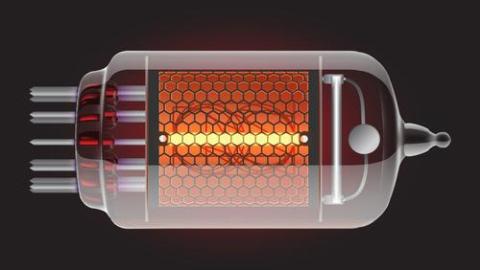Facing Computing Limits, Engineers (Re)Turn to Vacuum Tubes

What’s the Latest Development?
Computer engineers everywhere are working to get around the physical limitations that constrain computing speeds. One such limit on transistor speed, determined by ‘electron transit time’, is that electrons traveling inside a semiconductor often experience collisions or scattering. Like driving on a bumpy road, this limits a semiconductor’s speed. University of Pittsburgh researchers have found that “electrons trapped inside a semiconductor at the interface with an oxide or metal layer can be easily extracted out into the air (or a vacuum), because the electrons at the interface form a sheet of charges, a ‘two-dimensional electron gas.'”
What’s the Big Idea?
Like any electrons traveling in a vacuum tube, those extracted from semiconductors travel like a “bullet in the air, unimpeded, without any collisions or scattering, toward a positive charge, on a graphene sheet or a mesh of carbon atoms.” Hong Koo Kim, a professor in the University of Pittsburgh’s Swanson School of Engineering, said: “The emission of this electron system into vacuum channels could enable a new class of low-power, high-speed transistors, and it’s also compatible with current silicon electronics, complementing those electronics by adding new functions that are faster and more energy efficient due to the low voltage.”
Photo credit: Shutterstock.com





